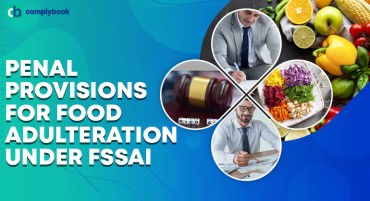

Law of False Imprisonment
False imprisonment is restraining a person in a bounded area without consent or justification. False imprisonment is a common-law tort and misdemeanor. It applies to governmental as well as private detention.
The factors which establish false imprisonment are as follows :
- Plaintiff’s knowledge for imprisonment.
- Probable cause of imprisonment.
- Intent of defendant during imprisonment and confinement period matters.
Under criminal law, whether the restraint is partial or total, the same is actionable. When the restraint is total and the person is prevented from going out of certain circumscribed limits, the offense is that of ‘wrongful confinement’ as defined in Section 340 of the Indian Penal Code. Under this, the Indian Penal Code punishes wrongful imprisonment. When it comes to the police, proving false imprisonment is enough to obtain the writ of Habeas Corpus. It is not compulsory that the person should be put behind bars, but he should be confined in an area from which there are no possible ways to flee away except the person’s will who has confined him. Depending on the laws of a particular jurisdiction, wrongful imprisonment can also be a crime, as well as intentional tort.
Essential Elements Of False Imprisonment
The essential elements of false imprisonment are as follows :
- Wilful detention: Restraint or False imprisonment must be willful or intentional. Unintentionally, closing the door when someone is on the other side is not a false imprisonment or wrongful confinement. Wilful detention applies to intentional restraint in any form, involving restraining him from leaving through force or intimidation, physically restraining a person from exiting and, physically locking him in a building, room, or from other places.
- The intention factor: Usually, the law of false imprisonment must be intentional. A person is not liable for false imprisonment unless her or his act is done with the motive of imposing a confinement or with knowledge that such confinement, to a substantial certainty, will result from it. For this tort, Malice is not relevant. It is normally upon the judges to determine from the evidence, as a question of fact, the intention of the defendant in an action for false imprisonment.
- Knowledge of the plaintiff: The detention of another person would have been wrong. There is no requirement that the plaintiff claiming another person for false imprisonment was aware of his restraint on his freedom at the time of his confinement.
Defenses Of False Imprisonment
The most common defense for false imprisonment are as follows :
- Valid Arrest: Fallacious arrest claims are not valid if a person was detained due to arrest under law or due to lawful arrest if they have possible cause to consider a person to have committed an offense or felony. In addition, a person can be lawfully detained for arresting a citizen without reason.
- Consent to Restraint: A person who has given consent to be restrained or confined without the presence of coercion or fraud or misconduct cannot subsequently claim to be a victim of false imprisonment. Thus, voluntary consent to false imprisonment is often a defense to false imprisonment.
- Probable Cause: This is an absolute defense of an action for false arrest and false imprisonment. When a probable cause is established by the action then false arrest and false imprisonment absolutely fail. It is stated that the probable cause test for arrest and imprisonment is an objective one, which is not based on the actual crime on the individuals, but on the grounds of reliable information or facts which would lead a person to take the usual precautions as an offender.
Remedies For False Imprisonment
The Remedies available for false imprisonment are as follows :
- Action for Damages: Damages in false imprisonment are those which flow from the detention. The damages for false arrest are to be measured only to the time of indictment or arraignment. There is no legal rule for the assessment of the damages and this is completely left on the court. The basis for damages involves injury to the person and mental suffering, physical suffering and humiliation, loss of time earnings and interruption of businesses, medical expenses incurred, injury to the reputation, etc.
- Nominal and Compensatory Damages: The general rule in an individual personal tort action is that the plaintiff is entitled to recover an amount that would be just and equitable, justifying an award for exemplary damages in the absence of circumstances. Mere unlawful detention constitutes the ground for the recovery of at least nominal damages, but an award of nominal damages only may be inadequate and flawed where the facts have proved that the right to greater damages.
- Punitive, Exemplary and Aggravated Damages: If an imprisonment is affected oppressively recklessly, insultingly and maliciously with a design to injure and oppress, the court may award exemplary or punitive damages. Punitive damages are awarded in cases where the defendant's conduct is recklessly indifferent to the rights of others or in intentional or wanton violation of those rights, and such damages are awarded to give a deterrent. In some conditions, exemplary damages may be given as when there is abuse of power by the state. Aggravated damages may be awarded in a proper case as when the imprisonment in itself of a nominal character is offensive or hurt fell to the plaintiff’s feelings.
- Writ of Habeas Corpus: The writ of Habeas Corpus is considered to be a golden remedy by the English Law. The Supreme Court of India and High Courts issue the writ of Habeas Corpus under Article 32 and 226 respectively. Subject to the rules framed by the High Courts, an application for habeas corpus can be made by the person in confinement or by any person on his behalf. This writ is an effective means of immediate release from unlawful detention, whether in private custody or prison. Where an unlawful detention is continuing the plaintiff may seek the writ of Habeas Corpus. The Writ Of Habeas Corpus is also used in criminal cases of false imprisonment.
- Self Help: Anyone who has been unlawfully detained may use self-help to escape involving reasonable force so as to defend him from unlawful arrest. The force used must be proportionate in the circumstances. This is a risky recourse since the power to arrest is likely to depend upon not only in the commission of offense but in the alternative, in a reasonable suspicion thereof.
Case Laws
RUDUL SHAH v. STATE OF BIHAR
In this case, the petitioner who was detained in prison for over fourteen years filed the writ of habeas corpus petition under Article 32 of the Constitution on the basis of illegal detention. The Hon'ble Supreme Court issued immediate release of the petitioner and gave direction to the state to grant the damages.
SEBASTIAN M.HONGRAY v. UNION OF INDIA
In this case, two persons were taken into custody by the Army authority in Manipur but were not produced in obedience to a writ of habeas corpus and it was alleged that those persons must have met an unnatural death while in army custody. The Supreme Court issued the direction to the Union of India to pay exemplary damages for the role of the army authorities in murdering the two persons.



